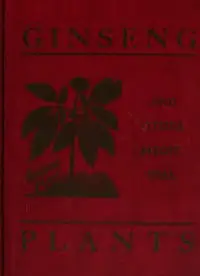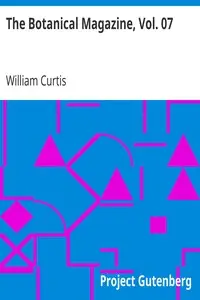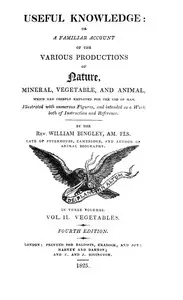"Catalogue of Economic Plants in the Collection of the U. S. Department of Agriculture" by William Saunders presents an old list of useful plants collected by the United States Department of Agriculture. Created in the late 1800s, this document shares facts about each plant, like where it comes from and how it's used, showing the farming and plant smarts of that time. William Saunders starts by explaining why the list was made, saying it's for people visiting and studying the Department's work. The book gives a detailed listing of different plants, explaining where they're from and how they're used in cooking, medicine, and other everyday things, highlighting how valuable these plants are to us.
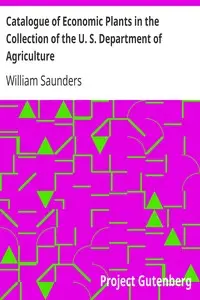
Catalogue of Economic Plants in the Collection of the U. S. Department of Agriculture
By William Saunders
Discover the origins, applications, and impact of plants central to our economy and history, as catalogued by the United States Department of Agriculture.
Summary
About the AuthorWilliam Saunders was a horticulturist, landscape designer and nurseryman. During his long career, Saunders designed the Soldiers National Cemetery at Gettysburg, planned and developed the Washington DC park system, authored hundreds of articles on horticulture and introduced numerous plant species into the United States, significantly impacting the nation's agricultural economy. He was one of the first landscape architects to be employed by the federal government and spent thirty-eight years working for the US Department of Agriculture. He was also one of the founders of the National Grange, or Patrons of Husbandry.
William Saunders was a horticulturist, landscape designer and nurseryman. During his long career, Saunders designed the Soldiers National Cemetery at Gettysburg, planned and developed the Washington DC park system, authored hundreds of articles on horticulture and introduced numerous plant species into the United States, significantly impacting the nation's agricultural economy. He was one of the first landscape architects to be employed by the federal government and spent thirty-eight years working for the US Department of Agriculture. He was also one of the founders of the National Grange, or Patrons of Husbandry.

![The botanist's repository for new and rare plants; vol. 07 [of 10] by Henry Cranke Andrews](https://cdn.a2-host.cloud/L1b0z7JAF2bqvMxFhK9-94BnOzVmNmWmD6H2eUZvHzY/rs:fill:215:325:0/g:ce/aHR0cHM6Ly9zcC1hc3NldHMuczMudXMtd2VzdC0wMDQuYmFja2JsYXplYjIuY29tL2Jvb2svNzMzNzEvVGhlX2JvdGFuaXN0c19yZXBvc2l0b3J5X2Zvcl9uZXdfYW5kX3JhcmVfcGxhbnRzX3ZvbF8wN19vZl8xMF9jb3Zlci5qcGc.webp)
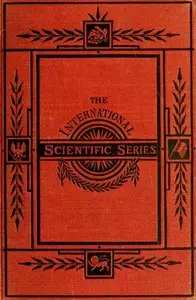
![The botanist's repository for new and rare plants; vol. 06 [of 10] by Henry Cranke Andrews](https://cdn.a2-host.cloud/hkVE-pN1gt56BDSmqSiQUdwgslIAIQWlGHw5O-j6Jlg/rs:fill:215:325:0/g:ce/aHR0cHM6Ly9zcC1hc3NldHMuczMudXMtd2VzdC0wMDQuYmFja2JsYXplYjIuY29tL2Jvb2svNzMzNjMvVGhlX2JvdGFuaXN0c19yZXBvc2l0b3J5X2Zvcl9uZXdfYW5kX3JhcmVfcGxhbnRzX3ZvbF8wNl9vZl8xMF9jb3Zlci5qcGc.webp)
